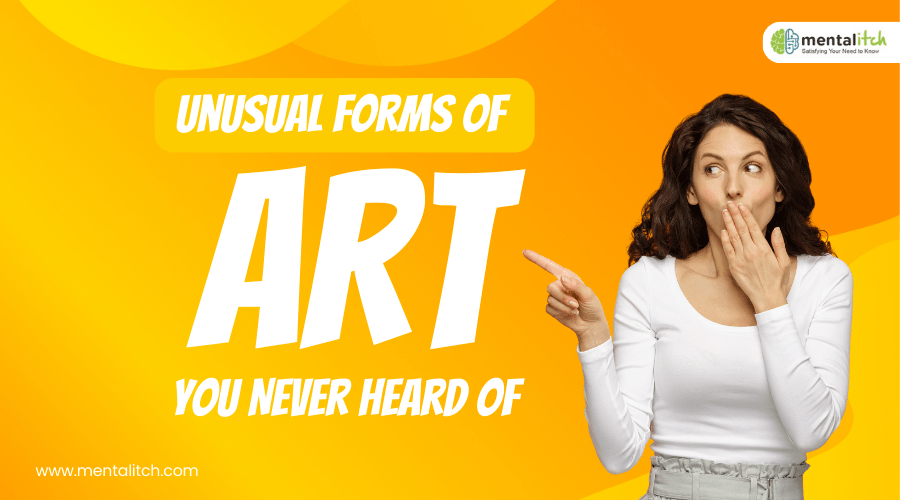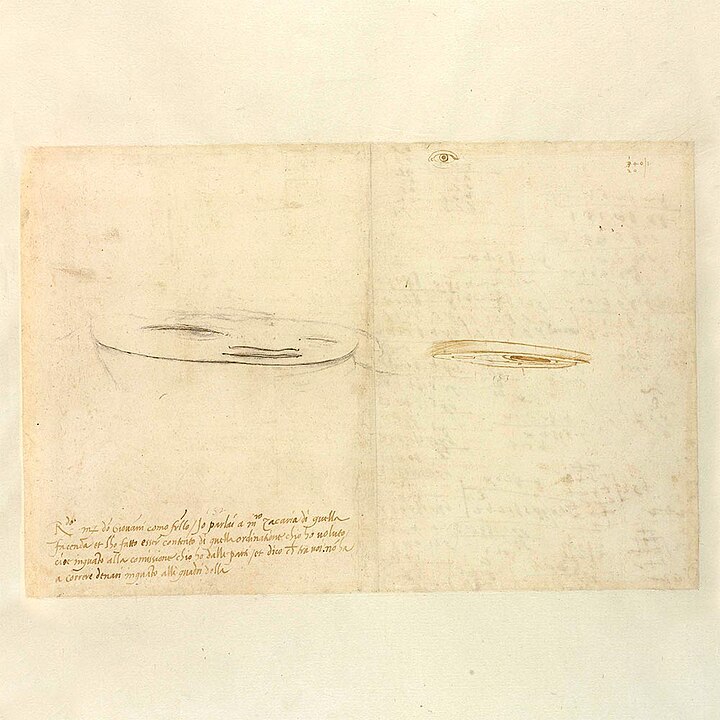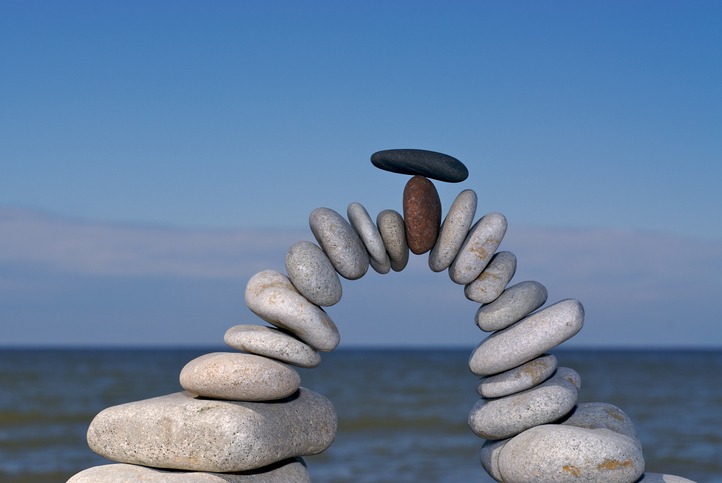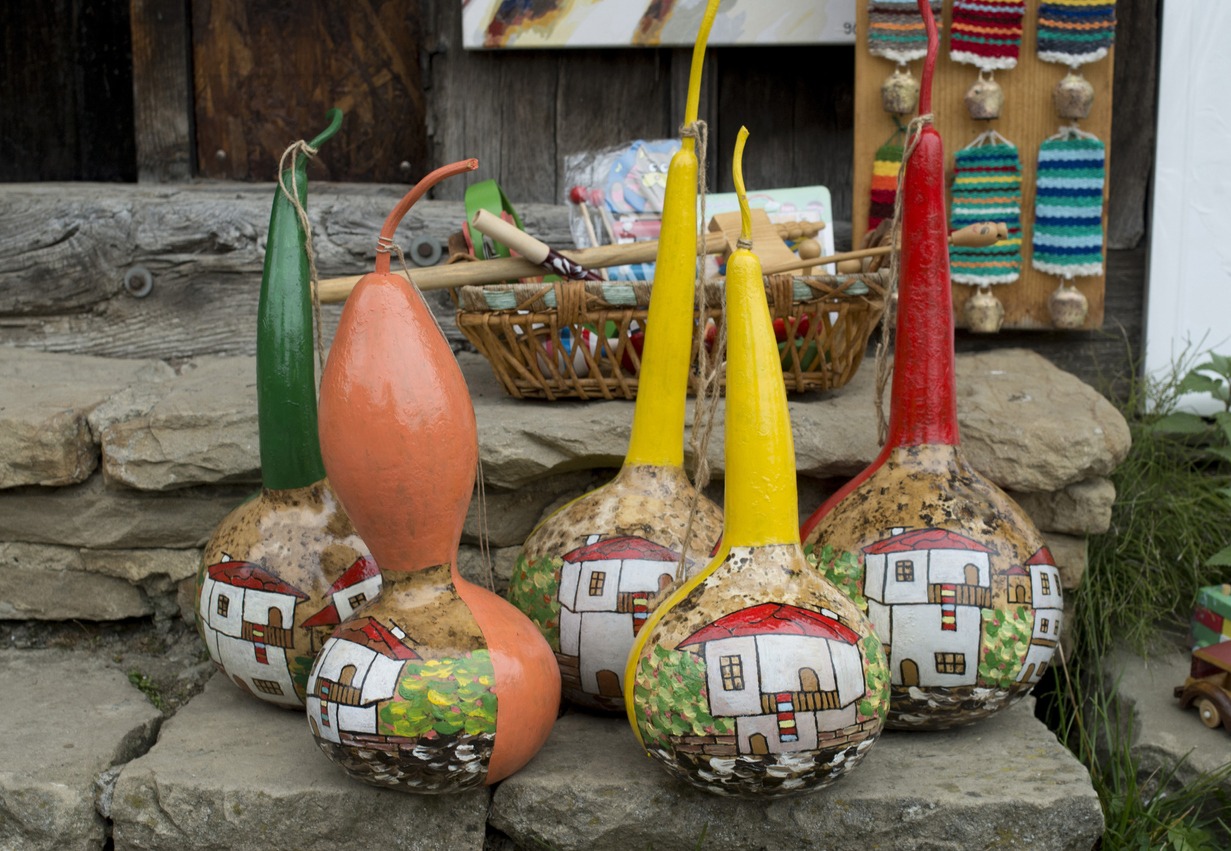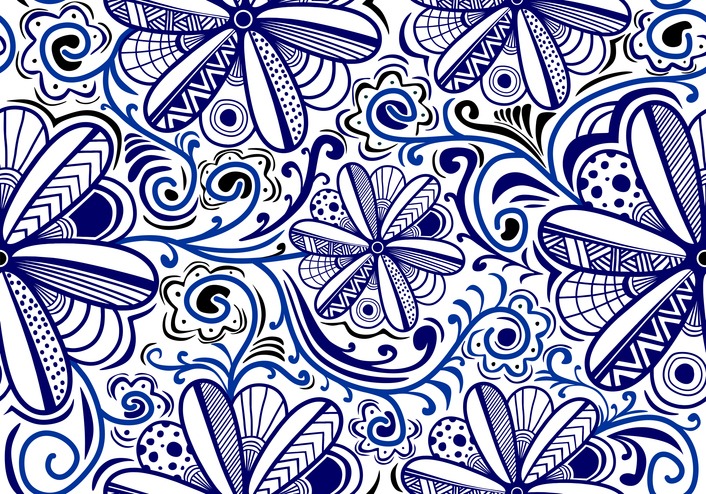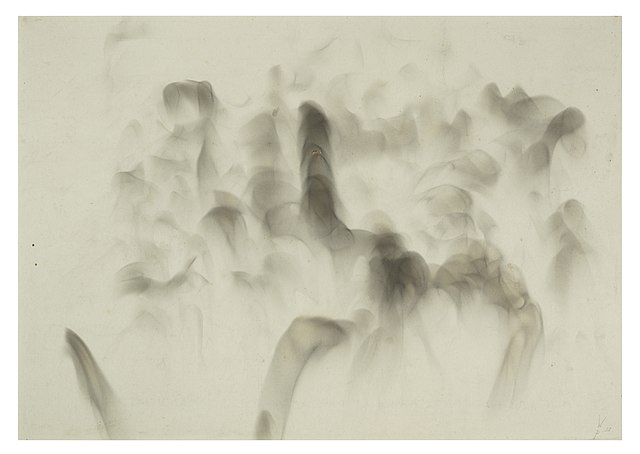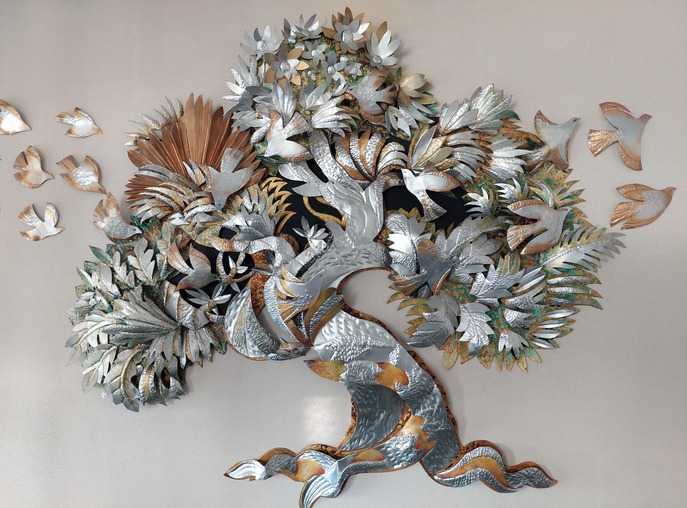Art, as they say, is a concept that cannot be defined. But whatever art’s real definition is, artists, art critics, and art students alike can all agree that art comes in many different forms. An art form is a specific shape or quality an artistic expression takes. Some of the most common art forms are paintings and drawings. What an artist uses as a medium to make a piece of art will help determine what form the artist is going to create.
The world of art is limitless. An artist can express himself in varied ways by using almost anything and turning it into a beautiful piece of art. These few fascinating art forms provides unique and exciting ways to explore new realms of artistic expression.
1. Anamorphosis
Anamorphosis is the method of drawing portraits which can only be entirely understood from a certain angle. In other cases, the image will only be correctly visible if viewed through a mirror. An early well-known example of Anamorphosis was produced by Leonardo da Vinci which was in the 15th century. Dating back to the Renaissance period, other notable examples of this type of art includes The Ambassador by Hans Holbein, The Younger, and Andrea Pozzo’s grandiose frescoes on the dome of the Sant’Ignazio church in Rome.
Over the decades, the technique has been renewed or modified ranging from 3 Dimensional portraits drawn on paper to some street art that mimics holes or crevices on the ground and even some using regular day to day items or furniture to create art. One development is anamorphic typography which in one example, graphic design students Joseph Egan and Hunter Thompson painted their school’s corridors with crooked, distorted text that resolves into messages when viewed from the correct angle. These three artists including Thomas Quinn who has also done similar work. were all inspired by Swiss artist Felice Varini well known as the modern master of anamorphosis.
2. Sticky note art
Sticky notes have become one of the dynamic mediums for an artistic expression. Sticky notes can offer a beautiful selection of colors and contrast for any artist. Several of them have even employed sticky notes in many different artistic genres. Meanwhile, some use sticky notes to add color and vibrancy to sculptures they’ve designed. And others use them in astonishing performance art pieces, which requests audience participation with writings on the notes. The square shape goes well to creating pixilated arts. Sticky notes surely are one of the most creative and colorful ways to express one’s self through art.
3. Photorealism
The photorealism movement began in the 1960’s and was sought to create stunning lifelike images because this form of art mostly imitates actual photographs. By copying every single detail, even if it is small or large, photorealist artists were able to produce an image that’s just like a duplicated version of the actual image. The movement encompassed sculpture as well as painting and was influenced by the contemporary pop art movement. The movement can also be known as super-realism or hyperrealism. But while pop art removed commercial images from their own context, photorealism started to focus heavily on the power of ordinary, everyday life, re-imagined and re-created as accurately as possible.
4. Sand Animation Art
Sand animation art is pretty interesting and very unique because sand art dissolves and vanishes in just a few minutes whereas most art pieces can last more than their original creators. That is why this form of art cannot be preserved. An artist working with this form creates a series of images using lines and figures with one’s hands. Sand animation art is a type of performance art wherein the sand animator commonly uses an overhead projector or light board to exhibit their art within the sand. Sand animation is in constant movement and is very interactive.
5. Rock Painting
This form of art includes a part that can be found in nature which involves transforming something ordinary and turning it into a memorable and unique piece. Rock Painting artists use rocks and stones as canvas for their art usually showing the beauty or history of the rock’s origin.
6. Rock Sculptures
Another art form that use natural objects specifically rocks is the rock sculpture. This type of installation art is said to represent balance and stability both physically and metaphorically. In rock sculpture, artists will use rocks or stones and arrange them in a pile through artistic and majestic ways.
7. Gourd Art
Gourd art involves creating works of art through painting, carving, dying or polishing dried, hard gourd shells. This art medium transforms different gourd shells into ornaments, vases, bowls, sculptures and wall arts. Gourd Art originates from the ancient African, Asian and some Native American tribes. But this day, the most successful and known gourd artists is Robert Rivera.
8. Batik
Batik is an ancient form of coloring textiles using natural dyes and wax that is similar to tie-dying. The method of making batik is by applying wax on the areas of the fabric you do not want to color. Subsequently, the cloth is submerged in a dye and left to soak so that the color sticks to the areas of cloth that does not have wax on it.
The art of batik is most elaborate in the island of Java in Indonesia. It is very highly developed that in October 2009 the Indonesian batik was appointed as a Masterpiece of Oral and Intangible Heritage of Humanity by UNESCO. The tradition of making batik is not just found in Indonesia but is also done in a number of counties as well.
9. Fumage
A fumage is a form of art that uses smoke to create an airy and fluid visual. This technique uses the smoke from a candle flame, a match, or a gas lamp. The smoke then creates a variety of impressions on a surface.
It originated in the 1900s and is made popular by Wolfgang Paalen who is known as a surrealist artist. In 1936, Paalen introduced his first fumage art entitled Dictated by a Candle in the International Surrealist Exhibition in London.
10. Sound art
Sound art is an artistic discipline concentrating on making visual art that produces sound. This type of art is diverse connecting with both auditory and visual senses of the audience. Most pieces of sound art are in the form of sculpture, installation or performance. Some artists of sound art build sculptures that creates sound with the help of the wind.
11. Futuristic Art
Futuristic Art is a form of art which breathes new life to old electronic equipment or computer parts. Everyday technology is developing and expanding abruptly that more electronics, gadgets, appliances and the likes are becoming outdated as time goes by. Because of these, some artists have started gathering equipment to be used as material to turn into something new and meaningful. These artists who can be called as the archaeologists of the modern world designs and creates unique sculptures using old electronics.
12. Scratchboard Art
Scratchboard art is a form of art that uses a surface like cardboard or hard poster board to create images. Scratchboard artists make their images backwards because they use white mark instead of black marks. The method of making this art is by first covering the board with a layer of hard white or colored chalk then subsequently painting it over using a black ink. Then the scratchboard artists will scratch off the black paint using a knife or stylus to show the white marks revealing a picture.
Art is truly in the eye of the beholder. Aside from the usual art forms that we are familiar with, there is quite a wide variety of art techniques that can be used to express an artist’s vision. However different or unknown the art techniques used may be, art still remains the same. Art is meant to be appreciated for its beauty or for its power to connect with its audience emotionally.
13. Metal Wall Art
Metal wall art is a type of wall decor that’s made of metal. Whether it’s a sign, wall plaque, or this patriot art, this kind of artwork is a great way to add to any home. Today, metal art has become more popular for décor use. The texture and visual appeal of metal art can be fascinating. Today, interior designers use metal accessories, like wrought iron furniture, statues, or sculptures to make a statement.
Metal artwork can be made using copper, iron, brass, tin, bronze, tin, gold, and silver. Because of its malleability and resilience, metal has become one of the best media for creating works of art.
Metal wall artwork can help create the framework in designing a space. Thus, you can use such artwork to add elegance and class to your home by combining different metals. You can also pair metal artwork with a mirror that comes in a metal frame to add an illusion of space, while also complementing the artwork. You can keep it simple by mounting a single piece of artwork on the wall, too. This results in a stylish and neat look.
For high ceilings and large walls, consider using one or two large art pieces or several small ones grouped together. Grouping items horizontally can make a wall look wider while hanging items vertically will create the illusion of height.
Check Out These Additional Unusual Forms of Art – Who Knew!
- Toilet Paper Roll Art: French artist Anastassia Elias creates intricate scenes inside toilet paper rolls. Using tweezers and tiny pieces of paper, she constructs detailed figures and landscapes inside the confined space of the rolls.
- Salt Art: Artists like Motoi Yamamoto use salt to create large, intricate, floor installations that resemble complex labyrinths or delicate patterns in nature. Salt’s transient quality adds a poignant layer, as these artworks are eventually swept away and the salt returned to the sea.
- Tape Art: Tape art involves using adhesive tapes, such as duct tape or packing tape, to create artwork. Artists like Max Zorn create detailed and emotive pieces solely with layers of brown packing tape over acrylic glass, which are then illuminated from behind.
- Shadow Art: Artists like Kumi Yamashita construct simple or complex objects that cast incredibly detailed shadows, revealing the true art only when light hits them correctly. The objects themselves are often abstract, with the light transforming them into recognizable shapes or scenes.
- Coffee Stain Art: Giulia Bernardelli creates stunning illustrations using accidental (and intentional) coffee stains. She manipulates the coffee spills with a spoon or directly with her hands, turning what might be seen as a mess into detailed portraits or landscapes.
- Book Sculptures: Artists like Brian Dettmer and Su Blackwell carve intricate sculptures out of books, creating detailed, three-dimensional scenes by precisely cutting through the pages. These transformed books tell new stories through their visual alterations.
- Latte Art: Beyond the hearts and leaves typically seen in café lattes, artists like Kazuki Yamamoto take latte art to another level by creating intricate foam sculptures that rise out of the cup, depicting everything from famous characters to complex floral patterns.
- Food Carving: Artistic food presentation has been taken to new heights with carving. Using fruits, vegetables, and even butter, artists carve detailed sculptures that are both beautiful and edible.
- Crayon Sculpting: Artist Hoang Tran carves detailed and colorful sculptures out of crayons. Each piece features characters from pop culture, with the crayon’s original color cleverly incorporated into the design.

